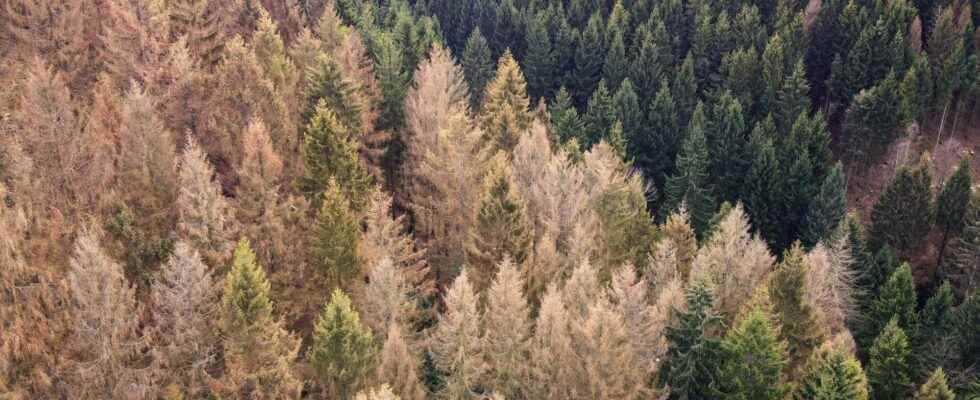You will also be interested
[EN VIDÉO] The forest mapped in 3D like never before Outsight, a leader in 3D Spatial Intelligence, has developed an automated solution capable of real-time 360° forest mapping. The solution uses lidar technology to locate each tree as the forest agent moves, who can then digitally tag it with additional information (tree species, presence of insects, etc.). © Outsight
Forest areas are major components for the development of all living organisms and the climate system of the Earth, but they are vulnerable to climate change. Among them, the coldest forests on Earth (boreal forests) span approximately 15.1 million km2 and cover about 23% of the world’s surface. They are therefore of great importance for the biosphere and for ecosystem services they provide, but seem to show biome changes as the climate change. Observations in the field and by satellite provide early evidence that changes are already occurring due to global warming.
Changes due to global warming
In the margins, south of the boreal foreststhe rising temperatures would lead to a drought which could decrease vegetation production and increase tree mortality in boreal zones. Instead, we would see a “browning” of the flora via a conversion of cold forests to wooded or shrub forests, or even to grasslands. Conversely, in the northern margins of the boreal forests, the warming of areas initially too cold to grow vegetation (the tundra) would make it possible to increase the productivity of the flora and would lead to the expansion of cold forests in the arctic and alpine tundras which would lead to a “greening” of these areas.
However, the extent of the change taking place still remains uncertain because the field studies of the immense boreal forests are too localized and the satellite data do not allow resolutions sufficiently precise. A new research study on this topic has been conducted by two colleagues from the Northern Arizona University and was published in the journal Global Change Biology. The researchers used 40 years of satellite images Landsat and environmental data, then assessed where and why vegetation turned green and brown. Areas of “greening” indicate that the conditions of the weather are favorable to the growth of the vegetation and the zones of “browning” indicate on the contrary the decline of the growth, even the death, of the vegetation.
Gradual shift of cold forests northward
Unsurprisingly, the study showed that greening and vegetation growth occurred in the northern boreal forests, where rising temperatures allow favorable conditions for cold forests to grow. In contrast, vegetation browning and death has been observed in southern boreal forests, where warming leads to temperatures too warm for cold forests to grow.
The study of 40 years of data therefore seems to show a significant effect of warming leading to a change in the biome of the boreal forests and leading to a gradual displacement of the latter towards the northern zones. The two scientists Northern Arizona University, who conducted this study, expect this trend to intensify rapidly during our decade. This northward migration of boreal forests and changes in the biome could have consequences for the biodiversity animal and vegetable that it is essential to follow in the years to come.
Interested in what you just read?
